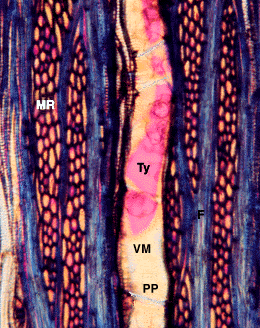 |
Tangential section through the secondary xylem of the stem.
Tyloses are outgrowths of parenchyma cells that expand into adjacent tracheary elements through the pits. They effectively block transport or movement through the vessel element, localizing pathogens such as fungal invaders and wilts. During leaf abscission tyloses are also initiated to seal off the xylem to prevent water loss in the leaf traces.
|
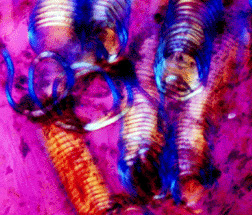 |
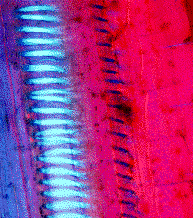 |
Protoxylem vessel members in longitudinal and transverse sections viewed through polarization filters. The secondary wall thickenings appear to be annular and helical. In the image on the right, vessels have been cut at an oblique angle and the helical secondary wall thickenings have decompressed like the coils of a spring. |
|
|
Phloem | |
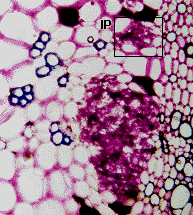
|
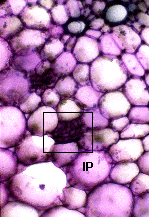
|
|
Isolated phloem strands are common in the pith of the tomato stem. IP = Isolated phloem | |
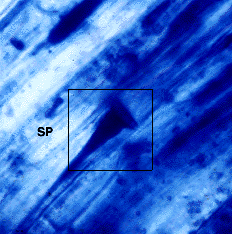 This section was stained with Analine Blue which preferentially stains callose. SP = Slime plug |
Slime plugs are aggregates of P-protein and callose that build up at the sieve plate in response to mechanical damage, e.g. wind or herbivore, or prior to leaf abscission. Callose and P-protein effectively block any transduction of materials through the sieve tube member preventing leakage and therefore loss of valuable materials including water, amino acids, proteins, carbohydrates, and minerals. Tracheary elements of the xylem can be sealed by tyloses. |